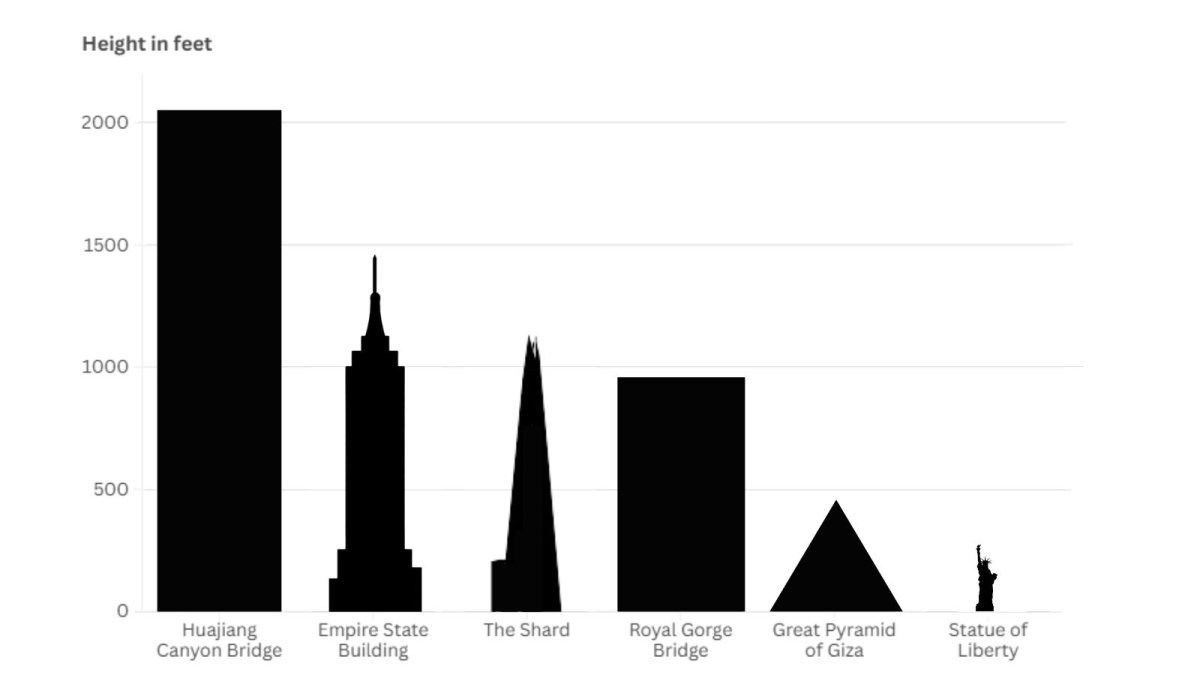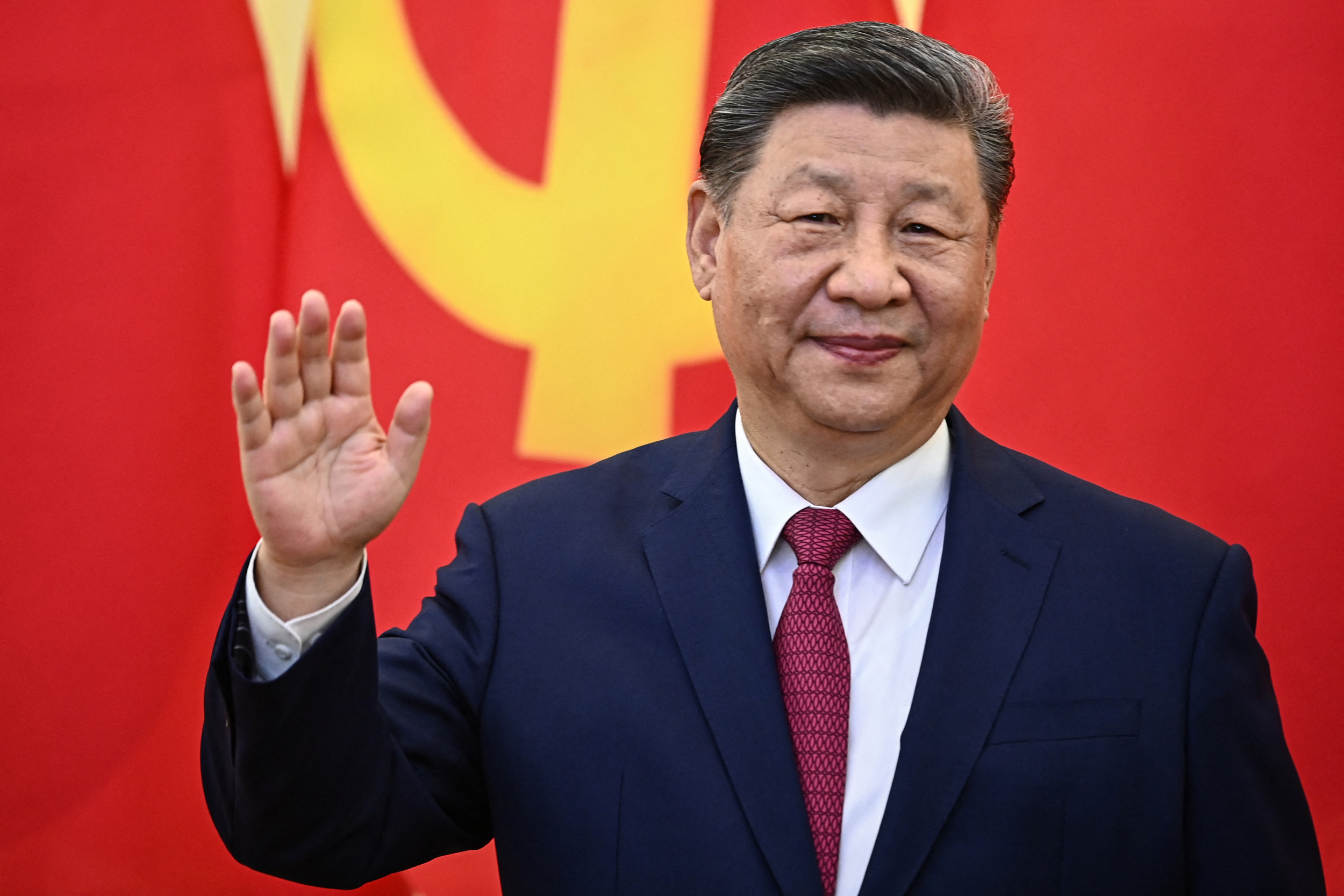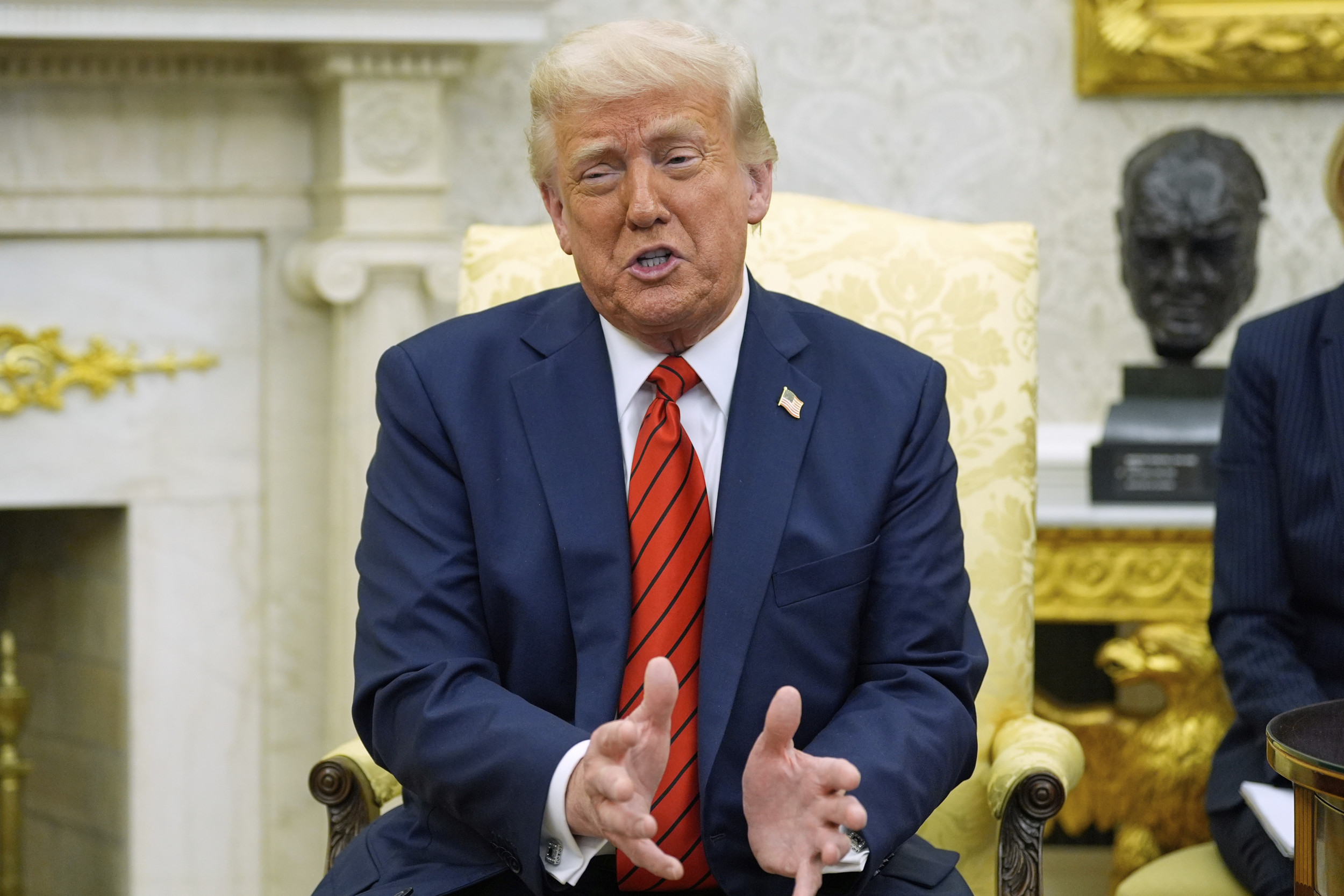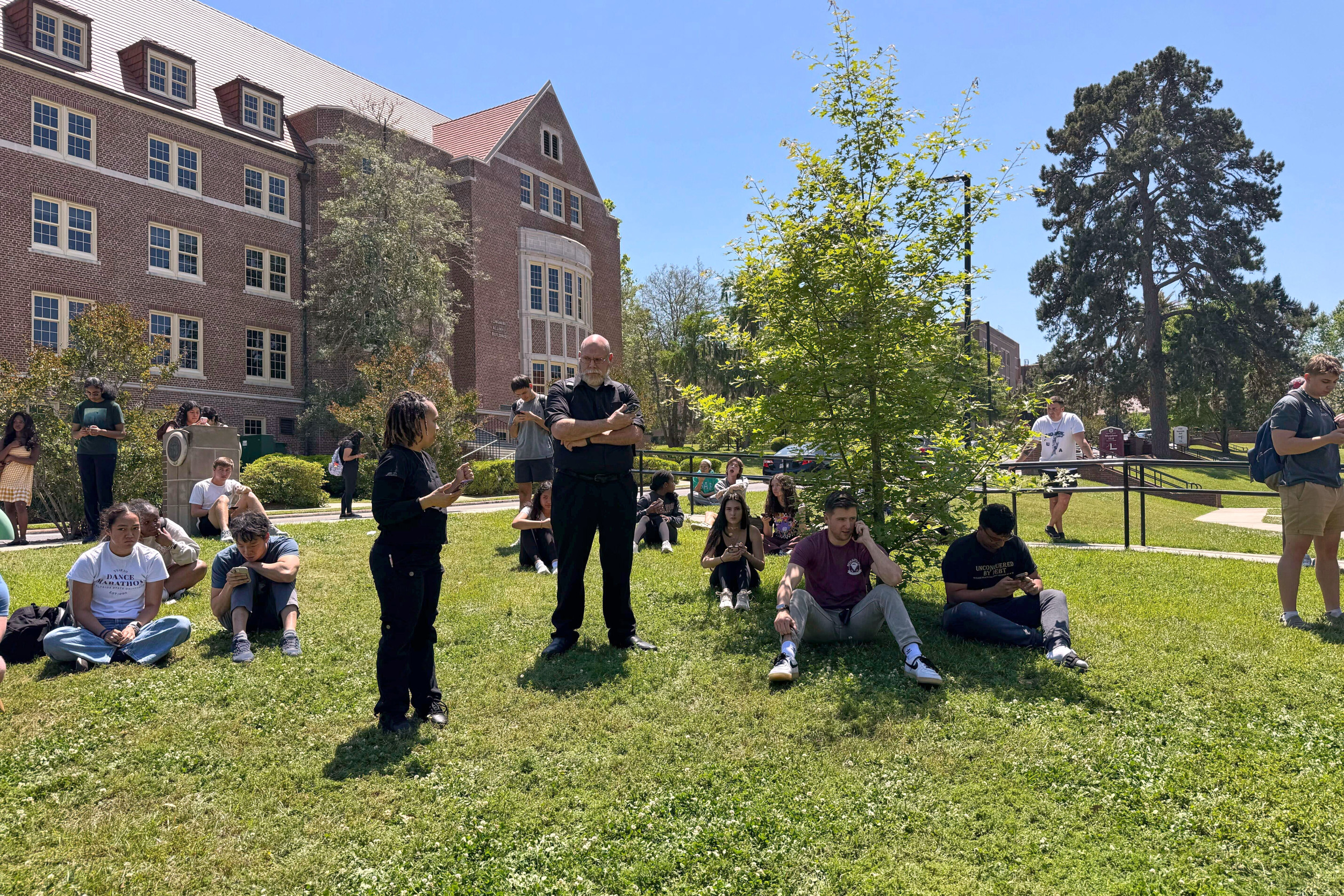🎙️ Voice is AI-generated. Inconsistencies may occur.
The Huajiang Canyon Bridge, which will become the tallest bridge in the world, is rapidly approaching its completion date in June.
The Chinese suspension bridge, which has been raised 2,051 feet above a gorge, will top the list of the world's highest bridges, and has been completed in just three years. To put that dazzling height into perspective, the tallest skyscraper in the U.S., One World Trade Center, is 1,776 feet.

The Context
The Huajiang Canyon Bridge will become the highest bridge in the world, beating out previous title holder, the Duge Bridge, which is 1,854 feet above the ground and is also in China. Despite the difficulties of construction at high altitudes, the structure was built well ahead of schedule, and cost around $283 million.
What To Know
Construction on the Huajiang Canyon Bridge began in 2022, in China's southwestern Guizhou region.
It sits over the Beipan river at the bottom of the gorge, and reduces the travel time across the canyon from over an hour to just three minutes.
Mamdouh El-Badry, a professor of civil engineering at the University of Calgary, told Newsweek that despite the complexity of building at this height, the bridge was still completed much faster than a project of this size in the West.
"In other parts of the world, a project of this scale would typically take five to 10 years from groundbreaking to completion, depending on environmental, political, and logistical factors," El-Badry said.
"For comparison, France's Millau Viaduct, one of the tallest in the world, took about three years to build following over a decade of planning and approvals. The Gordie Howe International Bridge, connecting Detroit to Windsor and planned to open for traffic in Fall 2025, would have taken over seven years from groundbreaking."
China's almost finished building the Huajiang Grand Canyon Bridge in Guizhou, which will be the world's highest bridge when it opens in June 2025.
— Volcaholic 🌋 (@volcaholic1) April 5, 2025
It stretches 2,890 meters and hangs 625 meters above the Beipan River, cutting the drive across the canyon from 70 minutes to just... pic.twitter.com/dDfZTDy5ee
Like other structures of this size, the Huajiang Canyon Bridge is a suspension bridge, hanging the main deck from vertical suspenders at either end. El-Badry told Newsweek that the altitude of the structure meant wind resistance was likely an additional issue in construction.
"This required tall towers and a very long main span, leading to immense structural demands," El-Badry said. "Working at such heights requires innovative construction methods likely relying on cable crane systems, modular deck sections, and high precision anchoring.
"Despite its scale, the bridge has a slim profile and sleek design, which reduces wind resistance and material use and minimizes visual disruption to the canyon environment."

China's Construction Approach
China dominates the list of the largest bridges in the world, and has built many of them faster than Western countries.
China is home to the six tallest bridges in the world, eight of the top ten tallest, and 43 of the top 50. By contrast, only three U.S. bridges made the top 50 list. This infrastructure is also spread across the country, not just centralized around large urban areas.
This is partly due to China's geography. The country's western and southwestern regions are highly mountainous, and traversal across areas like Guizhou is not possible with traditional roads, making the construction of structures like the Huajiang Canyon Bridge necessary
However, El-Badry said that China's unique approach to large-scale construction projects also accelerated the builds, as less consideration is given to issues like environmental reviews and local opposition.
"Over the past 20 years, China has adopted a top-down approach to infrastructure, giving priority to large-scale projects to drive economic development and regional connectivity," El-Badry told Newsweek.

"This includes massive investment, fewer hurdles, and streamlined approval processes compared to many Western countries which often face lengthy environmental reviews, funding uncertainties, and local opposition, which can delay or often block major infrastructure efforts."
What People Are Saying
Chen Jianlei, deputy director of the Guizhou Transport Department, said in a statement: "The completion of the Huajiang Grand Canyon Bridge will strengthen economic ties between Guiyang, Anshun and Qianxinan, fostering regional economic integration."
Zhang Shenglin, a member of the National People's Congress, said: "This super project spanning the 'Earth's crack' will showcase China's engineering capabilities and boost Guizhou's goal of becoming a world-class tourist destination."
What Happens Next
The Huajiang Canyon Bridge is scheduled to open for vehicle use in June 2025. Chinese authorities hope it will make the Guizhou region, which is one of the most mountainous in the country, more accessible.
fairness meter
About the writer
Theo Burman is a Newsweek Live News Reporter based in London, U.K. He writes about U.S. politics and international news, ... Read more




